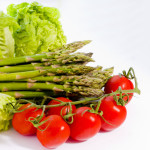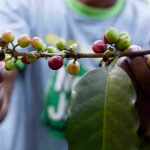 Despite the bottlenecks that faced the sector including a protracted dry spell, Kenya’s horticulture has made a leapfrog in 2017 by netting in $3.05b. This was some KSH89 billion more than the figures for the 2016 financial year.
Despite the bottlenecks that faced the sector including a protracted dry spell, Kenya’s horticulture has made a leapfrog in 2017 by netting in $3.05b. This was some KSH89 billion more than the figures for the 2016 financial year.
The Horticulture Department released the results while underlining that the sector still has a lot of potential as it was resilient enough to post 11% growth in profits.
Overall, the exports contributed a big chunk of the total revenue of $1.15b while the rest went to local resale and value addition. This was marginally higher than the total exports of 2016 which stood at $1.015b.
The growth impetus is as a result of the conformity by most smallholder horticultural farmers to obtain Global Good Agricultural Practices (GAP) certifications. It was also in part the compliance to stringent export controls from the government to avoid perennial rejections of local produce abroad. The biggest and most strict representative import bloc for Kenya is Europe.
Among the cash cows in the country’s horticulture for the year were flowers, which accounted for nearly 70 percent of the exports. In 2016, floriculture exports raked in $0.82b which was a rise from the $0.71b of the previous year. Overall, flower shipments totaled 159,961 tons.

Flowers bunch from the Rift Valley [Roberto Schmidt:AFP:Getty Images]
With the exception of flowers, the best performing horticultural crops under export included avocados, mangos, French beans, tea and coffee.
Avocado shipments rose to $60.5 million by the crest of 2017, which was a significant increase from the $50.2 billion postings of 2015. The country shipped 46.7MT in 2016, some 7.8MT more than it did in the previous year. The sector suffered a ban in early 2018 due to the shortage of the fruit locally but the sector has been buoyed with renewed effort to produce quality fruits.
Tea, which is one of the most important perennial crops in the country will make a significant edge in 2018’s projections of $1.3b. Predictions also put the total tonnage of the production of especially black tea to reach 452 million kilograms due to the ongoing wet spell. The 2017 tea revenue was $1.29b, slightly more than that of the combined horticultural exports of $1.15 billion. This was also an improvement from the flat $1.2b earnings in 2016. Farmers are also enjoying income from the sector with a kilo of tea leaves going for three dollars , a two US cents’ increase from 2016.
Mangos, a staple in the semi-arid parts of the country has also scored in both table export and value addition aspects. In 2016, the country saw a 27 percent increment in the production levels. Export to the EU and the Middle East prime markets has experienced double digit growth figures over the past half a decade. The sprouting of processing mango factories in the country in areas such as Embu and Hola has benefited four thousand farmers and twelve thousand farmers respectively in both regions.
(NB: all values for dollars against Kenya shilling use the 1 dollar=100 KSH rate).
The leading destinations of the produce from Kenya are mainly nestled in Europe. For instance, Holland, Britain, France, Belgium and Germany are the major recipients of spices and herbs, including basil and chives. The Middle-East, inclusive of the United Arab Emirates, Qatar and Saudi Arabia constitute some of the biggest destinations for Kenya’s rosemary. The same applies to emerging destinations like Russia and regional neighbors like Djibouti.
The major seasons for key horticultural produce from Kenya are represented in the following points:
•Exporters of avocados can begin with the main European market season in February that culminates at the end of September. Kenya has a perfect window as its Hass season starts from mid-year to September.
•French bean exports reach their peak in Europe between April and November each year. The key related produce includes snap beans. Kenya is well situated as it has a 12-month crop season.
•The European mango market peak runs from May through July and then runs from October through late November. Kenya has a window in various parts of the year for both local and hybrid varieties. Ngowe, for instance, coincides with the end of the peak demand in November and spills over to March.
The biggest shipping companies in the world have fresh produce apron at the Jomo Kenya International Airport (JKIA) in eastern Nairobi. Some of these include Kenya Airways, Ethiopian, KLM and Qatar. KLM is strategic for the shipment of flowers and vegetables to Europe as it connects to the biggest resell market, Amsterdam, in the Netherlands.
The airport serves a significant portion of the 3000 metric tons of horticultural produce that exit Kenya by air, road or sea each seven days. About 60 percent of the produce of the main shipping companies go out of Kenya via the Nairobi airport. The majority of the airborne produce is floral which accounts for 70 percent of weekly horticultural exports for the four major container companies in the country.
What has led to the increment in horticultural exports?
Analysts cite that the sector has outperformed expectations in 2017. This was a year riddled with high governmental levy, the boycott of some produce by the European Union, and unstable political climate due to the elections.
One of the telltale signs, however, that the country was headed in the right direction was the unveiling of a governmental body in 2017 to monitor horticultural exports. The country instituted the Kenya Horticultural Council (KHC) to oversee export quality compliance. The body was championed by two main export bodies in the flower and fresh produce sectors.
In 2015, the key fresh produce export, French beans suffered from rejections in the EU over excess residual levels. Fast-tracking to 2017, the government launched the National Traceability System (NTS). The Software as a Service (SaaS) tool engineered high quality check up of horticultural produce along the export path to help traders and farmers know of the status of their goods.
Before the institutionalization of KHC and the coming of the NTS, around six and a half million local people who rely on the sector had found employment uncertainty due to fear of produce refusal. For instance, legumes from Kenya five years ago had to undergo 10% port-to-port inspection which was occasioned by lack of such a tool as NTS. Currently, most of the check up is automated and thus less costly.
Some of the major horticultural players that have made determined efforts in ensuring the strengthening of the sector include the Fresh Produce Exporters Association of Kenya (FPEAK). They were among the signatory bodies that helped to birth KHC, which substantially helped to ensure high quality exports in 2017. The body’s inception date was 1975, with a purpose to integrate exporters and create ties on their behalf with state, private sector and international markets.
The Export Promotion Council (EPC) and Kenya Plant Health Inspectorate Services (KEPHIS) and KEBS are three other governmental parastatals that have enhanced horticultural exports. EPC oversees the smooth running of agricultural export business. The role of the 1996-incepted plant inspectorate, on the other hand, is to maintain quality standards in fresh produce and seeds. It plays the important part of offering certificates and measuring chemical residual levels for all outbound fresh produce. KEBS is the national body for the regulation of consumer standards of mostly industrial food and goods.
Historically, Kenya has been an agricultural country but the bulk of the produce has been for subsistence for some 70% of the residents. The sector employs 60% of the workforce. Horticulture contributes around $1 billion to the Gross Domestic Product.

Kiambu coffee bean plucking [Ute Grabowsky:Photothek:Getty Images]
The industry has also turned tables from reliance on large plantations by advocating smallholder trading relationships. In the 1990s, most small-scale farmers bonded to form co-operatives which then sold their produce to large plantations to meet the surplus demand of the latter who were the only exporters. Nowadays, such contractual partnerships have ebbed and instead the GAP-certification system has come to the rescue of family growers who export directly. They also use the services of Small and Medium Enterprise (SME) exporters who have in turn come to replace middlemen.
This might not be the case in the perennially large plantation-controlled cut flowers’ export business. According to a World Bank report, about 75% of the production in as early as 2003 came from the large farming belts in Naivasha. The plantations took advantage of the demand for extraordinary quality blooms and the rise in promotion expenditure which negated the progress of small scale farmers.
Currently, small-holder farmers contribute a high margin of export produce compared to the 1990s. There is still the need of investment opportunities to boost the family growers’ lot in the following aspects:
•Canning and pulping opportunities exist for a range of fruits especially orange, pawpaws and mango.
•The improvement of the potato value chain in areas like Nyandarua, Mai Mahiu, Nakuru and Molo, which can help export the surplus. Potato value addition in form of ready-to-fry chips have also become easy market opportunities especially with urban consumers.
•The burgeoning market of herbs and spices including coriander are gaining demand in post-Brexit Britain and are therefore rife for export.
•There are also plenty of opportunities for producing more of over-the-counter demand fruits that range from avocados to passion fruits. The major source of income could include avocados which face seasonal demand. A case in point was the export ban of the fruit in early 2018 for shortage in the local market.
•Cottage industries for the processing of fruits that fail to make the market are other opportunities. For instance, farmers in Murang’a are marketing dried mango chips and powder that they produce from overripe fruits. This helps to combat the loss of mangos that account of over 30% of production volumes per year.
In short, the Kenya fresh export sector has experienced a boost in 2017 due to the great opportunities that have taken place. There are also chances for those who venture in pulping and canning industries. A third factor that can improve the sector is the investment in cold storage facilities to prevent crop rotting in the farms which accounts for high losses. Currently, the bulk of cold storage takes place at the airports courtesy of the freight companies with their on-board shipping facilities. In short, owing to the great export postings for the last financial year compounded by the long rains season that has alleviated drought implications, 2018 could be a major year for local produce.
References
https://af.reuters.com/article/investingNews/idAFKBN1FP0NQ-OZABS?feedType=RSS&feedName=investingNews
https://www.nation.co.ke/business/Horticulture-nets-Kenya-Sh305-billion/996-4489854-ut965tz/index.html
https://www.standardmedia.co.ke/business/article/2001277519/horticulture-earns-kenya-sh115b
http://www.hortinews.co.ke/2017/01/20/national-traceability-system-breathes-new-life-to-kenyas-horticulture-industry/
https://www.foodbusinessafrica.com/2017/08/02/kenya-horticultural-council-unveiled-to-drive-compliance-with-export-standards/
http://www.hortinews.co.ke/2017/01/20/national-traceability-system-breathes-new-life-to-kenyas-horticulture-industry/
http://www.nafis.go.ke/fruits/mangoes/stakeholders/
https://www.standardmedia.co.ke/business/article/2001275146/avocado-exports-grow-to-sh6-5b
http://www.freshplaza.com/article/155680/Kenya-Mango-exports-on-the-rise
https://www.standardmedia.co.ke/business/article/2001275156/mango-factory-springs-hope-in-4-000-farmers
http://web.worldbank.org/archive/website00819C/WEB/PDF/CASE_-23.PDF
https://www.agroberichtenbuitenland.nl/…kenya/Scoping-horticultural-study- Kenya-2017.pdf

